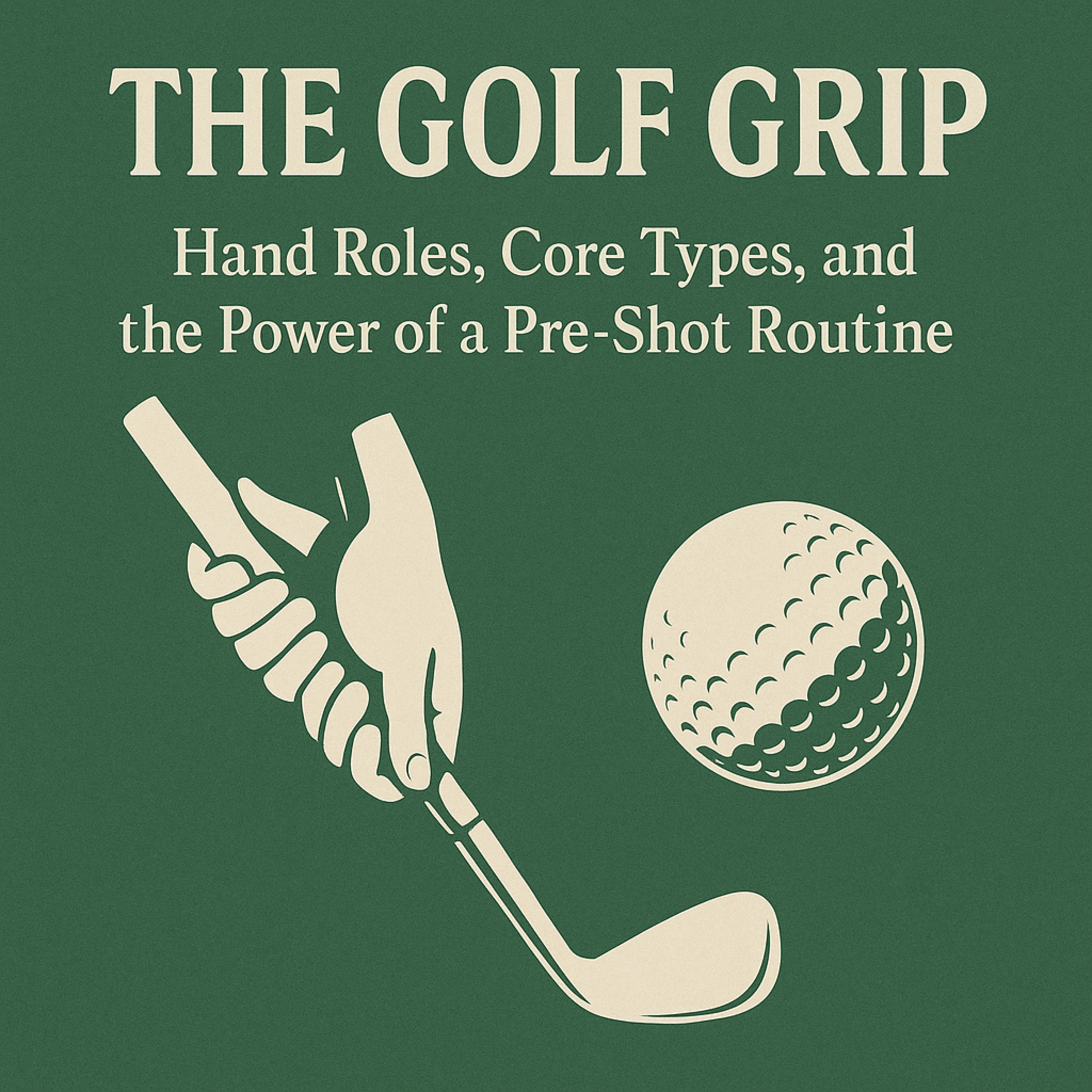#314 The Golf Grip: Hand Roles, Core Types, and the Power of a Pre-Shot Routine
- Author
- Golf247.eu
- Published
- Wed 13 Aug 2025
- Episode Link
- https://podcasters.spotify.com/pod/show/puttin-pro/episodes/314-The-Golf-Grip-Hand-Roles--Core-Types--and-the-Power-of-a-Pre-Shot-Routine-e36pef5
A golfer’s grip is the only physical link between body and club. It shapes how the clubface meets the ball, controls trajectory and spin, and affects consistency. A correct grip, matched to your biomechanics, lets you swing naturally rather than fight your motion.
1. Hand Roles
Left Hand – Clubface Control
- Neutral: “V” points to right ear → square clubface, neutral flight.
- Strong: “V” to right shoulder → closed face, draw bias.
- Weak: “V” to chin/left ear → open face, fade bias.
Right Hand – Angle of Attack
- On-Top: Shallower strike, suits Upper-Core (shoulder-driven) swings.
- Side-On: Neutral strike, suits Middle-Core (balanced) swings.
- Side-On-Under: Steeper strike, suits Lower-Core (hip-driven) swings.
2. BioSwing Dynamics Grip Matching
- Upper Core: On-Top grip, left thumb toward back of shaft.
- Middle Core: Side-On grip, left thumb slightly left of center.
- Lower Core: Side-On-Under grip, left thumb more on top.
3. Pre-Shot Routine
- Stand behind ball, align clubface to target.
- Pick an intermediate target 12–16 in. ahead.
- Place left hand first, matching core type.
- Add right hand (On-Top, Side-On, or Side-On-Under).
- Check grip pressure (4–5/10).
- Look at target, breathe, swing.
4. Common Mistakes
- Too much tension → reduced speed.
- Overly strong/weak grip → erratic ball flight.
- Mismatch with swing type.
- Skipping routine → inconsistent setup.
5. Pro Tips
- Film your hands in slow motion.
- Change only one element at a time.
- Use short-swing drills to test grip changes.
- Adjust pressure for different clubs.
Takeaway:
Mastering your grip — and matching it to your core type — builds power, control, and repeatability. Combine it with a consistent pre-shot routine for reliable results under pressure.
